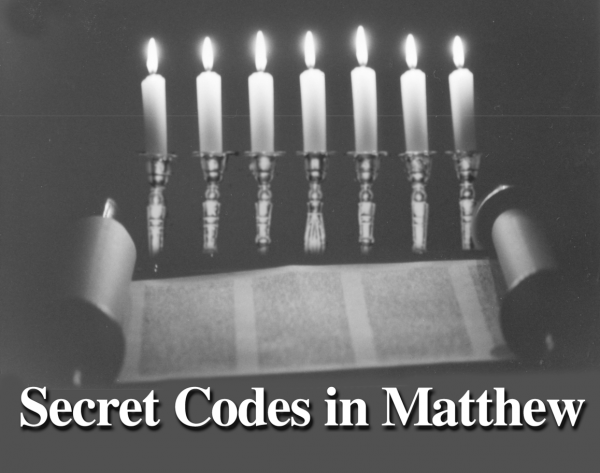The Secret Codes in Matthew: Examining Israel’s Messiah, Part 20: Matthew 26:1-30, by Kevin M. Williams
Messiah celebrates his final Passover on earth, teaching us much about His own identity as the Paschal Lamb.

And it came about that when Jesus had finished all these words, He said to His disciples, “You know that after two days the Passover is coming …” (Matthew 26:1-2a).1
Passover: the overriding event in Israel at the time of Yeshua’s2 crucifixion receives scant attention in the gospel accounts. Hundreds of thousands of fathers and husbands, often with their 12-year-old sons, would travel to Jerusalem to make the Paschal sacrifice required in Exodus 12. But in the period when Matthew was written, among the Jewish people, little needed to be said. Matthew’s audience was well acquainted with the traditions, symbols, and significance of Passover and the weeklong observance of the Feast of Unleavened Bread. For such an audience, Pesach—as Passover is called in the Hebrew—required no exposition.
2,000 years removed from Israel and the temple, from young innocent lambs and the ritual slaughter, from the weeklong observances of matzah bread and the inherently Hebraic perspective, our modern understanding and therefore, appreciation of events in Israel may be lacking.
In this section of The Secret Codes in Matthew: Examining Israel’s Messiah, we return to the root and core—the very foundation if you will—upon which the entire structure of redemption was built. This foundation—yesod in the Hebrew—is rich with imagery, and a testimony to the awesome foresight and design of its Great Architect, the Almighty Father, who built so firm a foundation. “Therefore thus says the Lord God, ‘Behold, I am laying in Zion a stone, a tested stone, A costly cornerstone for the foundation, firmly placed. He who believes in it will not be disturbed’” (Isaiah 28:16).
Every year, in Jewish homes around the globe, it is expected to not merely participate in the Seder, the order of service for Passover, but to engage in the observance as if actually participating in the events. May this be true for us as well, as we step into the culture and history of biblical Israel.
___
“You know that after two days the Passover is coming, and the Son of Man is to be delivered up for crucifixion” (Matthew 26:2).
Yeshua’s execution was a foregone conclusion. Not only had Yeshua told them on more than one occasion, 1 Peter 1:20 reminds us, “He was foreknown before the foundation of the world.” The plan of salvation had been set in motion long before Matthew, Moses, or Adam.
Yet with every perfect work of God, the Adversary of our souls contrives counterfeits to distract and derail men and women of otherwise good conscience. Out of this divine promise that “the Son of Man is to be delivered up for crucifixion” came the fabricated lie of the Jews as “Christ Killers,” a bitter root in Church history that has defiled too many for too long. This deceit became a rationalization for the Church to persecute the Jewish people and remains a blot on our religious history that should not be overlooked or forgotten.
As Jewish men, women, and children were marched into Nazi concentration camps, they read signs that said, “You killed our God, now we kill you.” Even today, some still live who read those signs in their lifetime and have endured “Christian” hatred.
Category: Biblical Studies, Pneuma Review, Spring 2006


